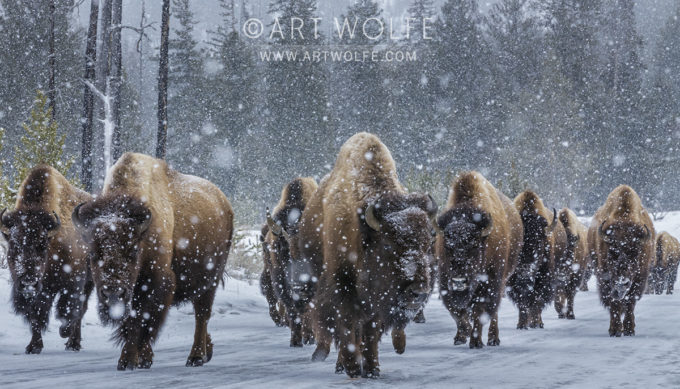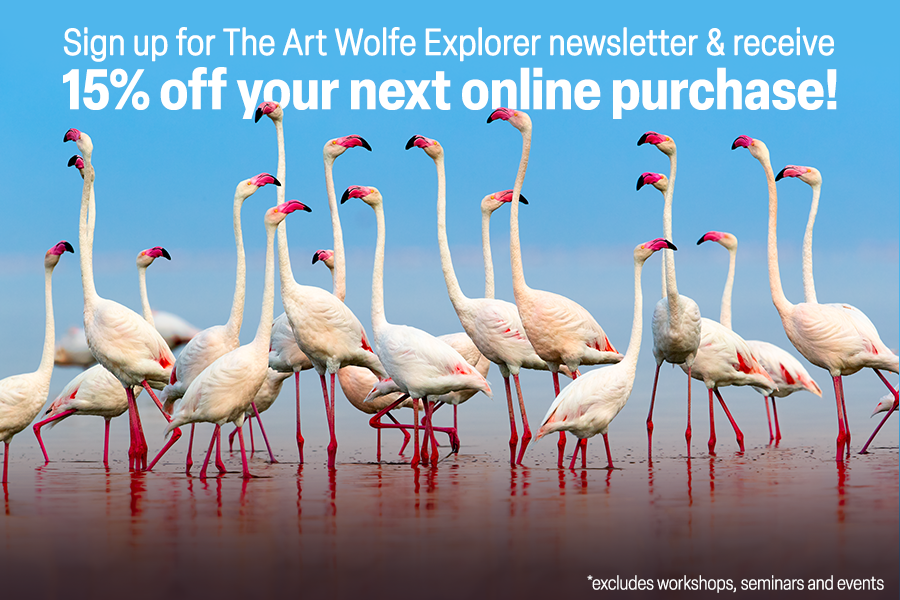#TechniqueTuesday – Bison in the Snow, Yellowstone National Park
With SNOWMAGEDDON hitting the Pacific Northwest, a timely themed #TechniqueTuesday is in order! This is an entry from Photographs From the Edge, where I’ve combined the stories behind some of my most recognizable career photographs, as well as providing tips, techniques, and camera data for them. Enjoy, and I hope everyone back home is staying safe in the Winter weather!

Canon EOS-1DX, Canon EF 70-200mm f/2.8 lens, f/18 for 1/250 sec., ISO 2000
This image of bison in Yellowstone National Park really began when I co-led a rafting trip down Alaska’s Taku River a number of years ago. On that trip I met Robert Bateman and his wife Birgit. This outstanding Canadian artist spent time photographing details of rocks along the river’s edge or details of the forest. I had to ask what he was doing. He simply responded that he was taking details that he could later render accurately as details in his paintings.
At that time I had been fixating on getting closer and closer to animals and ultimately getting that classic portrait of that animal almost as if it was a trophy. The analogy was that I was a hunter with the camera. Bateman made me take a serious look at how he would he was less concerned about portraits of animals and more concerned about capturing an animal within the context of its environment. I looked at my own work and started realizing he was right.
Bateman showed that by creating atmospheric conditions and a sense of place, the composition become more nuanced, more intricate, and more involving for the viewer. In the years after meeting Bateman, I think my work became infinitely more interesting by being more inclusive of the environment. From that point forward then I would always look at storms and thick atmosphere as opportunities rather than distractions.
This image of bison in Yellowstone works to carefully include the animal’s environment. With the advent of higher ISO cameras, I can shoot with both a smaller aperture and a faster shutter speed. Here, I was able to capture a herd of animals with great depth of field, and to use a fast enough shutter speed to stop the movement of snow. So in this image of the buffalo in Yellowstone, you can see tiny points of white snow suspended in motion as well as individual animals clearly in focus. To me, this photo recalls some of the great paintings of Robert Bateman.
Photo tip: For falling snow to show up in a photo, you need contrast to set the snow apart from the rest of the scene. In this image, both the dark trees in the background and the dark fur of the bison help bring this contrast to the image. The falling snow behind the bison also lend a strong sense of atmosphere to the shot.
The nature of the photo: Snow is extremely variable in size and shape, which has a strong impact on how it appears in a photo. Very cold conditions can create tiny snow crystals that will appear more as fog than snow in a photo. Large snowflakes can be a bold part of a winter photo.
For more photos and the stories behind them, along with tips and techniques, purchase Photographs From the Edge in my online store. As always, make a request note in your order and I’ll give it a signature!
And if you missed it – check out the gallery of images from my recent return trip to Yellowstone.



Your photo of the Bison in Yellowstone is excellent. It looks like you told the bison what to do, where to stand and how to pose for the shot! After viewing you photo I need a warm cup of coffee!
I was with you on the Taku River raft trip and learned so much by observing you and Mr. Bateman. I look forward to shooting with you again in Greenland this September.
How close to the bison were you? I never feel that my 200mm lens gets me close enough to the subject. Was there cropping needed to eliminate unnecessary elements of the landscape while still including enough to give a sense of place?
I was fascinated by this image of snowfall, and these photography experiences. Thank you very much.